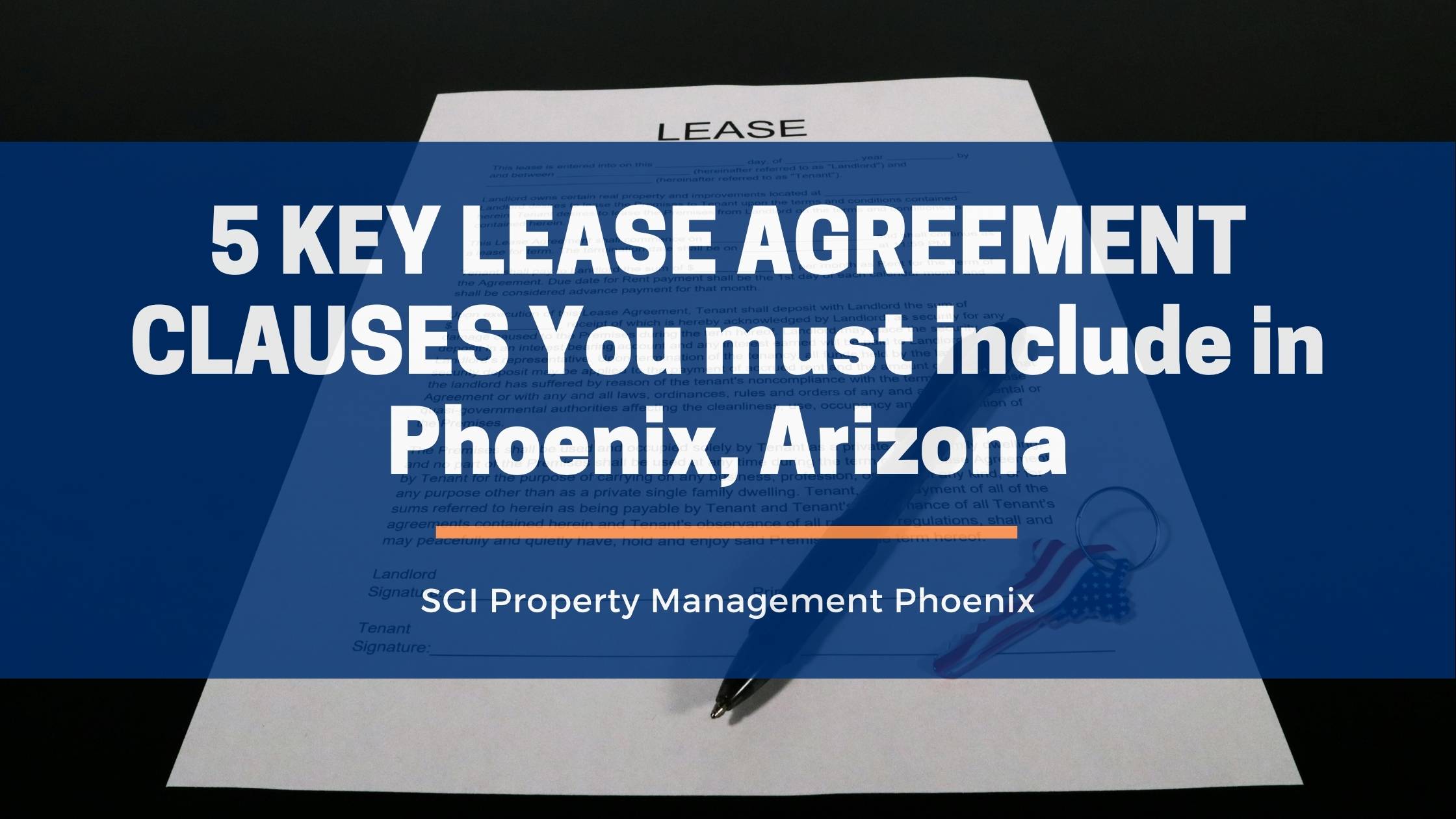
A reliable lease has the power to prevent confusion, protect income, and create smoother relationships with tenants. At SGI Property Management we see how often disagreements arise from terms that were never fully defined. A lease becomes far more valuable when each expectation is written clearly and supported by practical language that both parties understand. Strong terms reduce the cost of disputes, keep maintenance predictable, and help preserve the long term value of the property.
A well written lease gives owners structure. It eliminates assumptions about payments, responsibilities, and boundaries. When the rules are defined early, tenants are less likely to claim misunderstandings, and landlords can enforce terms without hesitation. This foundation also supports consistent operations, especially when multiple properties or long term investment plans are involved.
Clear Rent Terms
Steady rental income depends on precise rent guidelines. Many issues that appear later on often trace back to details that were never clarified in writing. The lease should state the exact rent amount, the due date, and any grace periods. It should describe accepted payment methods and outline late fees, when they begin, and how they accumulate. The clarity keeps payments consistent and makes expectations obvious.

Reliable procedures mirror the structure behind rent collection strategies that landlords use to maintain predictable cash flow. When tenants know exactly how payments work and what consequences apply, collections become far less personal and far more procedural. This prevents common disputes such as claims of confusion, disagreement over deadlines, or inconsistent payment formats.
Defined Maintenance Responsibilities
Maintenance concerns often lead to tenant frustration, property damage, and financial loss when responsibilities are unclear. The lease should specify what the tenant must handle, such as changing air filters, light bulbs, or basic yard care. It should also define the landlord’s obligations, including major repairs, mechanical issues, and structural concerns.

The agreement should explain how repairs are reported, what qualifies as damage, and what falls under normal wear. Without this clarity, landlords may face unexpected expenses from issues that should have been addressed earlier. Tenants also feel more comfortable when they understand the expectations around communications, timelines, and upkeep. Well defined guidelines reduce the chances of disputes or incomplete maintenance that later becomes costly.
Occupancy and Subletting Rules
Tenancy stability depends on knowing exactly who lives in the property. Unauthorized occupants create risk, increase wear, and bypass the screening process. A strong lease lists approved residents, identifies what qualifies as an unauthorized guest, and clarifies how long guests may stay.

If subletting is forbidden, the language should be unambiguous. If it is allowed, the process for requesting approval should be detailed. This includes how requests must be submitted and what criteria apply. These rules help landlords maintain control of the property and ensure that only vetted individuals occupy the home. They also prevent situations where new residents appear without notice and complicate future enforcement.
Entry and Access Standards
Access to the property is sometimes necessary for repairs, inspections, or urgent situations. Tenants also have an expectation of privacy, which needs to be respected. The lease should specify how much notice is required before entry, how notice is delivered, and what qualifies as valid reasons for access.
Clear boundaries make tenants feel respected while preserving the landlord’s ability to maintain the property properly. When emergencies arise, the lease should explain how situations are handled and what communication the tenant can expect. These terms help prevent misunderstandings that could escalate into legal challenges or strained relationships.
Early Termination and Lease Breaks
Early termination is one of the most expensive scenarios for landlords. A strong lease protects against unexpected vacancies by explaining the conditions under which the lease can be broken. Many owners incorporate procedures such as early termination fees, defined notice periods, and responsibility for remarketing costs.

The lease should also clarify whether the tenant must continue paying until a new renter is placed. These details reduce financial losses when a tenant leaves earlier than anticipated. Many owners who structure these terms thoughtfully also consider related matters like rent increase notice letter timing to ensure long term portfolio stability.
Rules surrounding specialized situations, such as service animals tenants or expanding investment plans, often influence how leases evolve. The consistency helps landlords maintain predictable operations even when tenant turnover, vacancies, or unusual circumstances arise.
Protecting Long Term Financial Stability
A lease that outlines protective terms supports long term investment. When the agreement covers early termination, occupancy, maintenance, and payments, the property becomes easier to manage. This structure becomes especially helpful for owners who are scaling their portfolios or preparing for future acquisitions. Many investors evaluate these protections with the same diligence they apply to broader financial decisions involving investment property financing and long term planning.
Owners who rely on these systems often experience fewer interruptions and more stable performance across their rentals. Tenants also benefit from clarity because the rules never feel subjective or unclear. Strong language reduces frustration and lays the groundwork for predictable interactions throughout the tenancy.
Key Takeaways
A strong lease protects income, time, and property condition.
Rent terms should eliminate ambiguity.
Maintenance responsibilities must be fully defined.
Occupancy rules prevent unauthorized residents.
Access standards balance privacy and proper maintenance.
Early termination clauses reduce vacancy losses.
Final Thoughts
A lease written with clarity becomes a powerful tool for long term stability. Well defined terms protect both the property and the investment behind it. If you want to strengthen your agreements or streamline your rental processes, our team is available whenever support is needed.









